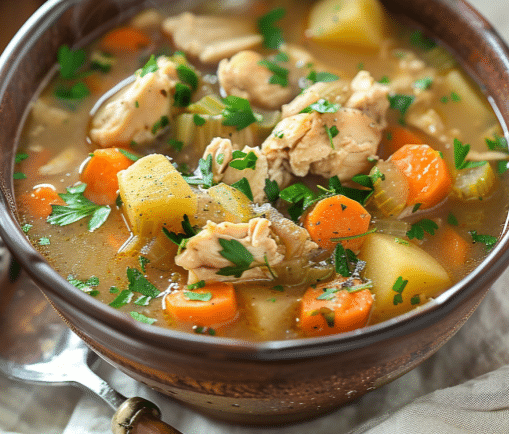Healthy Spring Vegetable and Goat’s Cheese Frittata: A Fresh, Flavorful Brunch Essential
Healthy spring vegetable and goat’s cheese frittata :There’s something magical about spring—the days get longer, the air feels lighter, and seasonal produce bursts with color and flavor. If you’re looking for a dish that celebrates all that freshness, a healthy spring vegetable and goat’s cheese frittata is the perfect choice. It’s nutrient-rich, flavor-packed, and versatile enough for breakfast, brunch, or a light dinner.
Table of Contents
This frittata is more than just a meal—it’s a seasonal celebration. With tender asparagus, sweet peas, fresh spinach, and the tangy creaminess of goat’s cheese, it’s both satisfying and light. To get the most out of your vegetables, it helps to know what’s in season and at its nutritional peak. You can check this seasonal vegetable guide to see what’s best in your area right now.
But what makes this recipe truly shine is the quality of the goat’s cheese. This creamy, slightly tangy cheese pairs beautifully with spring produce and offers surprising health benefits, from easier digestibility to higher levels of certain vitamins compared to cow’s milk cheese. If you’re curious, here’s a breakdown of the health benefits of goat’s cheese that will make you feel even better about adding it to your plate.

What Makes a Frittata Different?
Before we dive into cooking, let’s clear up the difference between a frittata, an omelette, and a quiche:
- Frittata – cooked slowly, finished in the oven, with ingredients mixed into the eggs.
- Omelette – cooked quickly on the stovetop with fillings folded in the center.
- Quiche – a baked egg dish with a pastry crust, usually containing cream or milk.
The frittata’s crustless nature makes it naturally gluten-free, lighter, and perfect for those seeking a lower-carb option.
Key Ingredients and Their Benefits
A good frittata starts with great ingredients. Here’s what you’ll need and why they’re worth adding to your diet:
Eggs
- High in protein and B vitamins.
- Provide choline for brain health.
Goat’s Cheese
- Tangy flavor that complements vegetables.
- Easier to digest for those with mild lactose sensitivity.
- Rich in vitamin A and calcium.
Spring Vegetables
- Asparagus – high in folate, vitamin K, and antioxidants.
- Spinach – loaded with iron, vitamin C, and magnesium.
- Peas – a good source of fiber and plant-based protein.
- Leeks or green onions – add mild sweetness and boost vitamin C intake.
By choosing fresh seasonal vegetables, you not only boost flavor but also maximize nutrient content.
Choosing and Preparing Spring Vegetables
For the freshest taste, look for vegetables that are:
- Firm, with no soft spots.
- Bright in color, indicating ripeness and freshness.
- Seasonal, ideally locally sourced.
Preparation Tips:
- Wash vegetables thoroughly under cold water.
- Trim woody ends from asparagus.
- Blanch dense vegetables like asparagus or peas for 1–2 minutes to keep their color vibrant.
- Pat dry to prevent excess water from affecting the egg mixture.
Step-by-Step Cooking Instructions
Serves: 4–6
Prep time: 15 minutes
Cook time: 20 minutes
Ingredients:
- 8 large eggs
- ½ cup milk (or dairy-free alternative)
- 1 cup spring vegetables (asparagus, peas, spinach, zucchini)
- 100g goat’s cheese, crumbled
- 1 tbsp olive oil
- Salt and pepper to taste
- Fresh herbs like parsley, dill, or chives
Method:
- Preheat oven to 375°F (190°C).
- Heat olive oil in an oven-safe skillet over medium heat.
- Sauté vegetables until just tender.
- In a bowl, whisk eggs, milk, salt, and pepper.
- Pour egg mixture over vegetables.
- Scatter goat’s cheese evenly.
- Cook on the stovetop for 5 minutes, without stirring, until edges set.
- Transfer skillet to the oven and bake for 10–12 minutes, until center is set.
- Garnish with fresh herbs before serving.
Flavor Variations
- Mediterranean – Add olives, sun-dried tomatoes, and fresh basil.
- Low-Fat – Use skim milk and reduced-fat goat’s cheese.
- Protein Boost – Add smoked salmon or shredded chicken.
- Spicy Kick – Include diced chili or a pinch of paprika.
Serving Suggestions
- Serve warm or at room temperature.
- Pair with:
- Fresh garden salad with vinaigrette.
- Whole grain toast or crusty bread.
- Roasted baby potatoes for a heartier meal.
Storage and Reheating Tips
- Store leftovers in an airtight container in the fridge for up to 3 days.
- To reheat:
- Warm in a low oven (300°F / 150°C) for 10 minutes.
- Avoid microwaving too long to prevent rubbery texture.
- Frittatas can be frozen—wrap tightly in foil and store for up to 1 month. Thaw overnight in the fridge before reheating.
Common Mistakes to Avoid
- Overcooking eggs – leads to dryness.
- Adding too many wet vegetables – makes frittata watery.
- Skipping pre-cooking – dense vegetables like carrots or broccoli won’t soften enough.
FAQs
Can you make a frittata without dairy?
Yes—use a plant-based milk alternative and omit the cheese or replace with dairy-free cheese.
Can I use frozen vegetables?
Yes, but thaw and drain them first to avoid excess moisture.
How do you know when a frittata is done?
The center should be set but still slightly wobbly; it will firm up as it rests.
Is goat’s cheese healthier than cow’s cheese?
Often, yes—it’s lower in lactose and may contain more beneficial fatty acids.
Can frittata be eaten cold?
Absolutely—great for picnics or packed lunches.
What’s the best pan to use for a frittata?
An oven-safe, non-stick or well-seasoned cast iron skillet.
Healthy Spring Vegetable and Goat’s Cheese Frittata: A Fresh, Flavorful Brunch Essential
- Total Time: 30 minutes
- Yield: 4–6 servings 1x
- Diet: Vegetarian
Description
A light and flavorful frittata made with fresh spring vegetables, creamy goat’s cheese, and fragrant herbs.
Ingredients
8 large eggs ½ cup milk (or dairy-free alternative) 1 cup spring vegetables (asparagus, peas, spinach, zucchini) 100g goat’s cheese, crumbled 1 tbsp olive oil Salt and pepper to taste Fresh herbs like parsley, dill, or chives
Instructions
1. Preheat oven to 375°F (190°C). 2. Heat olive oil in an oven-safe skillet over medium heat. 3. Sauté vegetables until just tender. 4. In a bowl, whisk eggs, milk, salt, and pepper. 5. Pour egg mixture over vegetables. 6. Scatter goat’s cheese evenly. 7. Cook on the stovetop for 5 minutes, without stirring, until edges set. 8. Transfer skillet to the oven and bake for 10–12 minutes, until center is set. 9. Garnish with fresh herbs before serving.
Notes
This frittata works well with any seasonal vegetables. Avoid overbaking to keep it moist.
- Prep Time: 10 minutes
- Cook Time: 20 minutes
- Category: Breakfast
- Method: Skillet + Baking
- Cuisine: Italian
Nutrition
- Serving Size: 1 slice
- Calories: 190
- Sugar: 2g
- Sodium: 270mg
- Fat: 13g
- Saturated Fat: 5g
- Unsaturated Fat: 8g
- Trans Fat: 0g
- Carbohydrates: 3g
- Fiber: 1g
- Protein: 14g
- Cholesterol: 225mg
Keywords: spring vegetable frittata, goat cheese frittata, vegetarian brunch, egg bake






